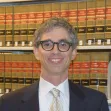Exclusives
BLOG POST
Powerful Place-Making Meets Cowboy Culture
<p> Returning home to Vancouver last week after taking in some of the 100th Anniversary world-famous Calgary Stampede, I find myself thinking about the relationship between city-defining events and place-making. I also couldn’t help remembering an unusual moment in my career that relates to the Stampede.<br /> <br /> In 2006 when I was 36, after 4 rounds of interviews, I found myself in a closed-door session with Vancouver's City Council. I was being recommended to Council to become the new Director of City Planning, replacing former Co-Directors Larry Beasley and Dr. Ann McAfee. Council was meeting me for the first time, before going in-camera to officially decide on my hiring.<br /> <br />
BLOG POST
Traffic deaths, safety and suburbia, Part 2
<p class="MsoNormal"> <span style="font-size: 11pt; font-family: 'Century Schoolbook'">A couple of months ago, I wrote a blog post comparing the safety of inner suburbs and outer suburbs. (See <a href="/node/56468">http://www.planetizen.com/node/56468</a> )</span> </p> <p class="MsoNormal"> <span style="font-size: 11pt; font-family: 'Century Schoolbook'">My post showed that (in least in the metropolitan areas I looked at) inner suburbs were safer than outer suburbs, because violent deaths from murder and traffic combined were lower in the former.</span> </p>
BLOG POST
End of an Era for Planning Information in Canada?
Whenever we weed through the records of our personal past -- diaries, letters, drawings, school assignments from our youth -- we face difficult decisions over what to keep and what to discard. We are forced to come to terms with our documented past, and often recognize the power such records hold to both inspire – and embarrass. For individuals and governments alike, the decision over what to record, what to retain and what to communicate is a potent one, for it can either afford or constrain opportunities for actions in the future, as well as confirm or conflict with the image or myths we choose to tell about ourselves.
BLOG POST
The Precarious Nature of Guerilla Planning
How forlorn spaces might be developed as community resources that lend a sense of place, however fleeting, can be a precarious exploit.<br /> <br /> Convinced the real challenge in planning and design these dog days is placemaking, my convivial colleague Rhett Beavers and I have been exploring the potential of a variety of fringe and derelict sites under the banner of the Landscape Architecture program at UCLA Extension. With big and brutalistic no longer winning the hearts and minds of the discerning public, we are thinking small and green. <br />

BLOG POST
Breadth and Depth in Planning Education
A frequent query I receive from students is whether they should focus on gaining a broad understanding of many aspects of planning and places or if they should focus on one topic in depth. This is an important question.
BLOG POST
If I'm eating chowdah I must be in Boston
<p> <span style="white-space: pre" class="Apple-tab-span"> </span>One of the ways we identify places is by foods for which those places are known. Baltimore – crab. Maine – lobster. Cincinnati – chili. San Francisco – sourdough bread. Vienna – pastry. Even for a city to which you’ve never been, chances are that in your mind that city has some food association. </p>
FEATURE
What's to Become of Small Towns?
BLOG POST
The Ecological Value of Lawns
I appreciate natural environments. I have always enjoyed walking in wilderness and cycling on rural roads, and I understand the ecological value provided by undeveloped lands, which include clean water, air and wildlife habitat. I also enjoy local fresh vegetables and fruits and so appreciate the value of preserving regional farmlands. Planners call these "greenspace," or more generally "openspace" since some, such as deserts and waterways, are open but not necessarily green.
BLOG POST
Nothing really pays for itself (except maybe toll roads)
<p> Arguments over transportation policy often run as follows: </p> <p> HIGHWAY SUPPORTER: Highways pay for themselves! Buses/trains don't! So highways good and everything else bad bad bad! </p> <p> TRANSIT SUPPORTER: But highways create bad externalities like pollution and climate change! So if highways were taxed at their true cost gas would cost a zillion billion cajillion dollars per gallon! (followed by numerous counterarguments and counter-counterarguments that I won't bore you with, except as written below...) </p> <p> It seems to me that these arguments miss one point: even if the highway system as a whole pays for itself, the system is so chock full of cross-subsidies that each individual road doesn't (except for toll roads). </p>
BLOG POST
A Tree Grows in Pigeon Town
I don’t know what it is about New Orleans that makes me wax rhapsodic. But something about the city makes everyday life look poetic. I returned to the Crescent City last week after having last visited just seven months ago, when a tree planting
BLOG POST
From On High, Chelsea Looks Much Different. But, is it for the Better?
<p> The High Line curving through the west Chelsea section of Manhattan bordering the Hudson River has to be one of the most successful planning and design stories in New York City in recent years, touted as a crowning achievement of the reign of Mayor Bloomberg, to be emulated in cities across the country. </p> <p> Testimonials and awards not withstanding, I am wary of the cloying elitism of a crowing Bloomberg. Having followed the project’s promotions for the last decade and the community’s evolution for the last half century, I am skeptical of its heralded success. And with the recent sounding of related development controversies, a second opinion is in order. </p>
BLOG POST
APA Poll Calls for Major Shift in Planning Profession
This week the American Planning Association proudly released the results of a recent poll entitled <a href=http://www.planning.org/policy/economicrecovery/>Planning in America: Perceptions and Priorities</a>, which it commissioned indicating that Americans are overwhelmingly supportive of community planning. Given the state of national politics, it's no wonder that Americans are reserving their passions for local issues. Boss Tweed and Mayor Quimby are looking like angels by comparison. Some of the results are beyond obvious -- such as the fact that 77% of Americans "agree that communities that plan for the future are stronger" -- while others could, if heeded, foretell profound changes for the profession.
BLOG POST
Center for Neighborhood Technology Responds to Criticism
<p> <em>Editor's Note: A <a href="/node/56493" target="_blank">recent Planetizen blog post</a> by the University of South Florida’s Steven Polzin voiced several criticisms about the Housing + Transportation (H+T®) Affordability Index, created by the Chicago-based Center for Neighborhood Technology (CNT). We have provided a venue for Scott Bernstein, founder and president of CNT, to respond below.</em> </p> <p align="center"> <u>CNT’s H+T Index Fills Gaps in Data that Others Don’t Provide</u> </p>
BLOG POST
New Understanding of Traffic Congestion
<p class="MsoNormal"> Congratulations to this year's high school, college and university graduates! The current crop includes our son, who was recruited by a major corporation. The location of his new job will affect his travel patterns and therefore the transportation costs he bears and imposes for the next few years: until now he could get around fine by walking, cycling and public transport, but his new worksite is outside the city center, difficult to access except by automobile. As a result he will spend a significant portion of his new income to purchase and operate a car, and contribute to traffic congestion, parking costs and pollution. This is an example of how land use decisions, such as where corporations locate their offices, affects regional transport patterns and costs.

BLOG POST
Sticker Price vs. Real Price for a Planning Education
Unless they are independently wealthy, students thinking about graduate school in planning need to consider the cost.
BLOG POST
The Joys and Surprises of Teaching "Guerilla Planning"
<p> One of my prerogatives teaching a landscape design studio exploring public space at UCLA Extension is being able to pick the class projects with which to challenge the students. Time for them to get real and get down, walk the streets, wallow in the sites; to see, hear, smell, taste and touch. </p> <p> Me and my colleague, the loquacious landscape legend Rhett Beavers, are in effect the clients, the students the professional consultants, and the particular projects our whim, no matter how it might be a sugar coated pedanticism in the school’s offering of an urban laboratory. </p>
BLOG POST
Transit and seniors
<p> I occasionally have speculated that our aging society would lead to increased transit ridership, as seniors lost the ability to drive. But I recently discovered that seniors are actually less likely to use public transit than the general public. One study by the American Public Transit Association showed that 6.7% of transit riders are over 65 (as opposed to 12.4% of all Americans).(1) The oldest Americans are even more underrepresented on America's buses and trains: only 1.5% of transit riders are over 80, about half their share of the population (2). The only other age group that is underrepresented on public transit is Americans under 18. </p>
BLOG POST
"Willingness and Ability" as Drivers of Community Development
<p> The work of planning at some point becomes the work of doing. </p> <p> Few communities move from planning to executing easily. This is especially notable in weak markets, though it occurs in strong markets too. In weak markets, planning does not typically require anyone to make a commitment. Or to put it more directly, it too seldom requires the community to really make choices. </p>
Pagination
EMC Planning Group, Inc.
Planetizen
Planetizen
Mpact (formerly Rail~Volution)
Great Falls Development Authority, Inc.
HUDs Office of Policy Development and Research
NYU Wagner Graduate School of Public Service
Urban Design for Planners 1: Software Tools
This six-course series explores essential urban design concepts using open source software and equips planners with the tools they need to participate fully in the urban design process.
Planning for Universal Design
Learn the tools for implementing Universal Design in planning regulations.


































